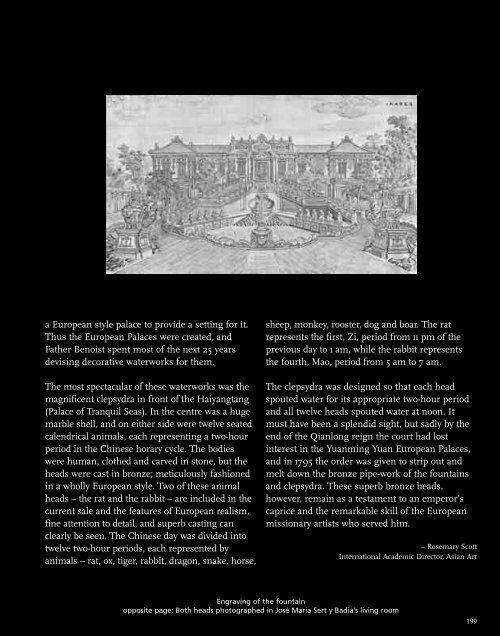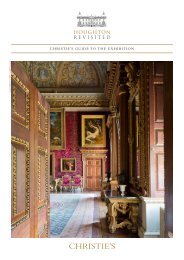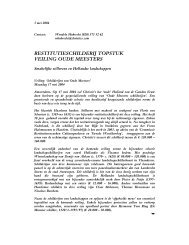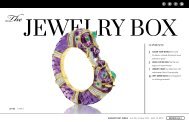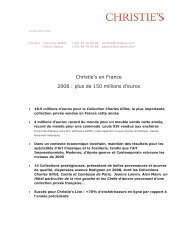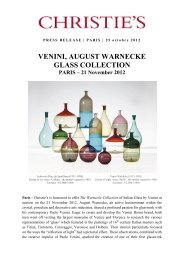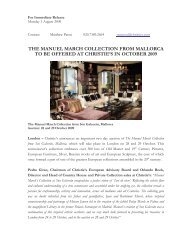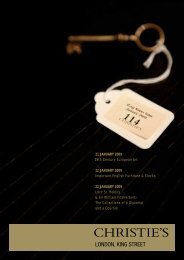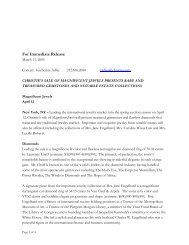Yves Saint Laurent Pierre Bergé - Christie's
Yves Saint Laurent Pierre Bergé - Christie's
Yves Saint Laurent Pierre Bergé - Christie's
Create successful ePaper yourself
Turn your PDF publications into a flip-book with our unique Google optimized e-Paper software.
a European style palace to provide a setting for it.<br />
Thus the European Palaces were created, and<br />
Father Benoist spent most of the next 25 years<br />
devising decorative waterworks for them.<br />
The most spectacular of these waterworks was the<br />
magnificent clepsydra in front of the Haiyangtang<br />
(Palace of Tranquil Seas). In the centre was a huge<br />
marble shell, and on either side were twelve seated<br />
calendrical animals, each representing a two-hour<br />
period in the Chinese horary cycle. The bodies<br />
were human, clothed and carved in stone, but the<br />
heads were cast in bronze; meticulously fashioned<br />
in a wholly European style. Two of these animal<br />
heads – the rat and the rabbit – are included in the<br />
current sale and the features of European realism,<br />
fine attention to detail, and superb casting can<br />
clearly be seen. The Chinese day was divided into<br />
twelve two-hour periods, each represented by<br />
animals – rat, ox, tiger, rabbit, dragon, snake, horse,<br />
sheep, monkey, rooster, dog and boar. The rat<br />
represents the first, Zi, period from 11 pm of the<br />
previous day to 1 am, while the rabbit represents<br />
the fourth, Mao, period from 5 am to 7 am.<br />
The clepsydra was designed so that each head<br />
spouted water for its appropriate two-hour period<br />
and all twelve heads spouted water at noon. It<br />
must have been a splendid sight, but sadly by the<br />
end of the Qianlong reign the court had lost<br />
interest in the Yuanming Yuan European Palaces,<br />
and in 1795 the order was given to strip out and<br />
melt down the bronze pipe-work of the fountains<br />
and clepsydra. These superb bronze heads,<br />
however, remain as a testament to an emperor’s<br />
caprice and the remarkable skill of the European<br />
missionary artists who served him.<br />
Engraving of the fountain<br />
opposite page: Both heads photographed in José Maria Sert y Badia’s living room<br />
– Rosemary Scott<br />
International Academic Director, Asian Art<br />
199


